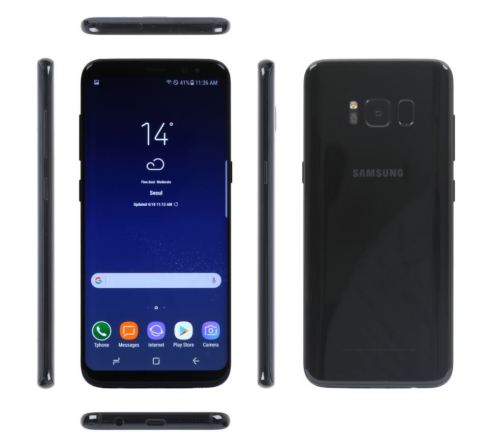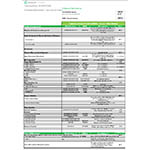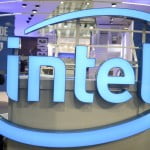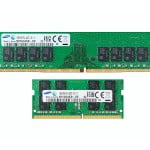
IHS Markit teardown of Galaxy S8 Materials (Photo: Business Wire)
LONDON–(BUSINESS WIRE)–The new Samsung Galaxy S8 equipped with 64 gigabytes (GB) of NAND flash memory carries a bill of materials (BOM) cost that comes out to US$301.60, much higher than for previous versions of the company’s smartphones, according to a preliminary estimate from IHS Markit (Nasdaq: INFO), a world leader in critical information, analytics and solutions.
“While there are new non-hardware features in the Galaxy S8, such as a virtual assistant called Bixby, from a teardown perspective the hardware in the Galaxy S8 and that of the forthcoming new iPhone is expected to be very similar.”
Tweet this
After $5.90 in basic manufacturing costs are added, Samsung’s total cost to make the Galaxy S8 rises to $307.50; the unsubsidized price for a 64GB Galaxy S8 starts at around $720. The preliminary estimated total at this point is $43.34 higher than that of the Galaxy S7 previously performed by IHS Markit, and is $36.29 higher than the total build cost of the Galaxy S7 Edge, considered a better comparison to the Galaxy S8. IHS Markit has not yet performed a teardown analysis on the larger Galaxy S8 Plus.
“The higher total BOM costs for the Galaxy S8 seem to be part of a trend that reflects something of an arms race in features among Apple, Samsung and other phone manufacturers, as they all try to add new and distinguishing hardware features,” said Andrew Rassweiler, senior director of cost benchmarking services for IHS Markit. “While there are new non-hardware features in the Galaxy S8, such as a virtual assistant called Bixby, from a teardown perspective the hardware in the Galaxy S8 and that of the forthcoming new iPhone is expected to be very similar.”
The introduction of the Galaxy S8 comes at a delicate time for the embattled South Korean electronics giant, which is eager to put behind the challenges associated with the Galaxy Note 7, whose exploding batteries prompted a worldwide recall.
The latest salvo from Samsung shows how it’s keen to regain consumer confidence and attain leadership in the smartphone landscape, a nearly saturated but still highly competitive space that remains key to retaining subscriber loyalties and winning new converts.
First smartphone capable of gigabit-LTE speeds
Both the Galaxy S8 and S8 Plus feature a 10-nanometer (nm) system-on-chip (SoC) along with CAT-16 LTE modem and radio. The CDMA version of the S8, intended for use in the United States as well as in China, will feature the Snapdragon 835 chipset from San Diego-based Qualcomm. In comparison, a version of the phone featuring Samsung’s homegrown Exynos 8895 chipset will be used for the rest of the world.
The CAT-16 LTE radio allows the new Galaxy phone to aggregate three carriers of up to 20 megahertz each. Combined with 4×4 MIMO antennas and higher-order modulation of 256 QAM, the LTE modem is capable of reaching peak theoretical speeds of one gigabit per second. “Gigabit LTE is very much the marquee specification for 2017 flagship smartphones,” said Wayne Lam, principal analyst of smartphone electronics, IHS Markit. “Keep in mind that gigabit speeds are a best-case scenario and that a user’s real-world experience will be limited to what mobile networks can provide.”
New “Infinity Display” design fits better in hand
The redesigned Galaxy S8 has a tall, narrow shape that is 1.5 millimeters narrower than the previous Galaxy S7, providing slick new ergonomics while also optimizing screen real estate. The screen curves around the edges, and Samsung designers have maximized the display, relative to the size of the phone, with a 5.8-inch 2960×1440 AMOLED display and an elongated aspect ratio of 18.5:9. Compared to conventional 16:9 aspect-ratio Quad HD smartphone displays, the Galaxy S8 features an additional 15 percent more pixels in a form factor that is easier to hold in the hand. The device’s haptic engine, which provides the “click” feel for users, also has been improved for longer-duty cycles and a more dynamic response.
Double the base-model storage
Both the Galaxy S8 and S8 Plus feature 4GB of RAM and built-in storage of 64GB—twice the standard built-in storage found in the Galaxy S7 as well as the iPhone 7. Storage for the new Samsung phones can also be expanded, up to 256GB, via a microSD card. The Samsung NAND flash memory and DRAM on the S8 come in at a cost of $41.50. Rassweiler said: “While in previous years the cost per gigabyte has generally fallen in both the NAND flash and DRAM areas, we have seen rising prices in both DRAM and NAND flash recently due to some tightness in the marketplace. The cost of memory in the S8 reflects these recent market dynamics, even though we expect the erosion in memory pricing—something that occurs regularly in the memory market—to resume during the course of the year.”
Battery
The battery capacity on the Galaxy S8, at 3000 milliamp hour (mAh), is the same as that found in last year’s Galaxy S7. However, compared to the Galaxy S7 Edge, which had a 3600mAh battery, Samsung played it safe after the Note 7 incident and included a considerably less dense battery pack. Overall cost estimate for the Galaxy S8 battery pack is $4.50.
Single camera lens
Although the Galaxy S8 and S8 Plus come with new features and the latest components, each still has only a single camera in the back—essentially the same as the camera module found in last year’s Galaxy S7. Apple’s iPhone 7 Plus, the newly launched LG G6 and many Chinese OEMs are now promoting dual cameras as a key feature. Owing to the asymmetric placement of the rear fingerprint sensor, it would have been likely that a dual-camera design was scrapped at the last minute in the design cycle.
For more early observations, visit the IHS Markit Technology blog section, or jump directly to this IHS Markit blog post: Samsung touts powerful new features with Galaxy S8.
About IHS Markit (www.ihsmarkit.com)
IHS Markit (Nasdaq: INFO) is a world leader in critical information, analytics and expertise for the major industries and markets that drive economies worldwide. The company delivers next-generation information, analytics and solutions to customers in business, finance and government, improving their operational efficiency and providing deep insights that lead to well-informed, confident decisions. IHS Markit has more than 50,000 key business and government customers, including 85 percent of the Fortune Global 500 and the world’s leading financial institutions. Headquartered in London, IHS Markit is committed to sustainable, profitable growth.
source”pcworld”















